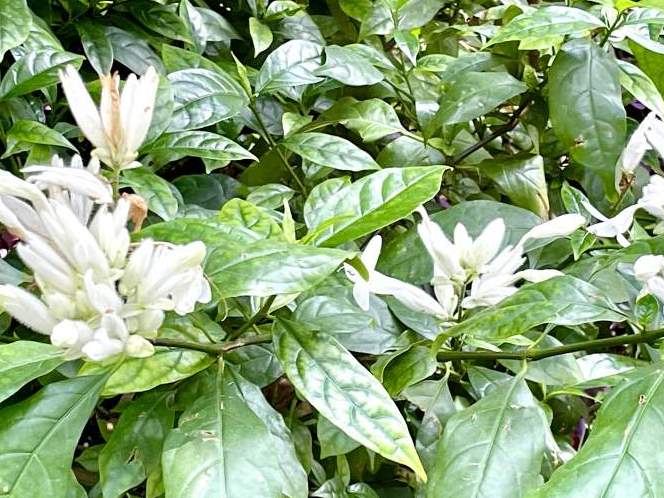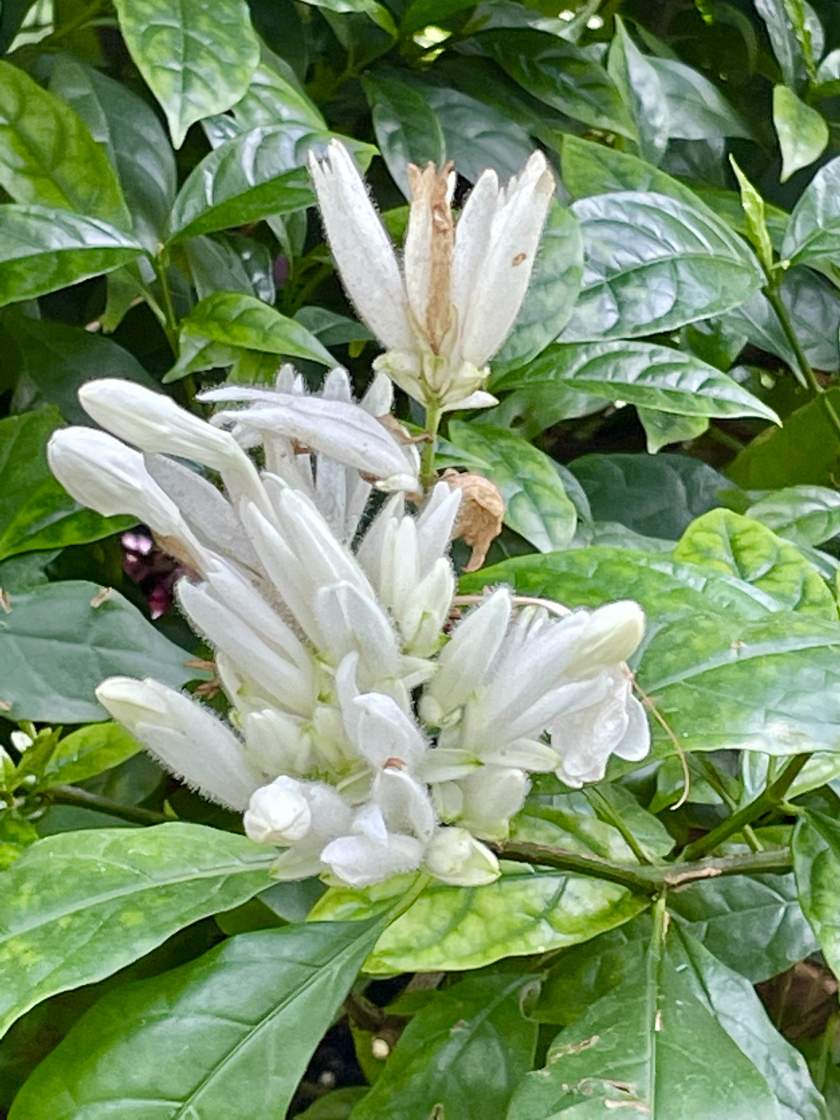Whitfieldia Elongata: The Graceful White Candles
Whitfieldia elongata, also known as White Candles, is a captivating plant species that belongs to the Acanthaceae family. It was first described and published in 1899 by botanists De Wild. and T. Durand in “Bulletin de la Société royale de botanique de Belgique.” The species is native to several African countries, including Angola, Cameroon, Central African Republic, the Democratic Republic of the Congo, Equatorial Guinea, Ethiopia, Gabon, Ivory Coast, Kenya, Nigeria, Rwanda, Sudan, Tanzania, and Zambia. Whitfieldia elongata thrives in tropical forests, often found along water streams, at altitudes ranging from sea level up to approximately 1500 m.
Characteristics: Leaves and Flowers
Whitfieldia elongata is an elegant, evergreen shrub with an erect or sarmentose growth habit. It can reach a height of 2.5 to 6 meters (8 to 20 feet). The leaves are simple and opposite, with an elliptic shape, smooth margins, and pointed apex. They measure 15 to 25 cm (6 to 10 inches) in length and 4 to 10 cm (1.6 to 4 inches) in width. The leaves are coriaceous, meaning they have a leathery texture, and exhibit a dark green color with a glossy appearance on the upper surface.
Inflorescence:
The plant produces cymose or panicle terminal inflorescences on a peduncle that ranges from 1 to 4 cm (0.4 to 1.6 inches) in length. The inflorescences themselves are 5 to 20 cm (2 to 8 inches) long and consist of green deciduous bracts with an elliptic shape and pointed apex, measuring 1.5 cm (0.6 inches) in length.
The flowers of Whitfieldia elongata have a delicate beauty. They feature a white tubular calyx covered with short and thick down, measuring 2 to 4 cm (0.8 to 1.6 inches) in length. The petaloideous corolla is also white and showcases a cylindrical corolline tube, ranging from 3 to 6 cm (1.2 to 2.4 inches) in length. The corolla has an imbutiform throat with five stretched or retroflexed lobes, elliptic in shape, measuring 1.8 to 2.8 cm (0.7 to 1.1 inches) in length and 0.5 to 0.8 cm (0.2 to 0.3 inches) in width. Additionally, the flowers feature four prominent didynamous stamina, with two long and two shorter lengths, adorned with purple anthers.
The Fruit:
Fruit production in Whitfieldia elongata occurs in the form of capsules, which measure approximately 3 cm (1.2 inches) in length. These capsules contain two globose seeds, each about 0.8 cm (0.3 inches) long. The plant can propagate through both seeds and cuttings.
Cultivation of Whitfieldia elongata:
Sunlight: Whitfieldia elongata thrives in partial shade, preferring filtered light rather than direct sunlight. Placing the plant near an eastern or western window, ensuring it is not too close to the glass, provides the ideal lighting conditions. The plant can also tolerate early morning sunlight, but it flourishes best in bright shade, particularly when it receives midday and afternoon shade.
Watering: It is important to keep the soil slightly moist to prevent wilting. In summer, frequent watering is necessary, typically around three to four times a day. During winter, watering should be done more moderately, approximately once a week. Ensuring the soil remains moderately moist is crucial, as excess and stagnant moisture can harm the plant. However, avoid overwatering as it can weaken the plant.
Soil: Whitfieldia elongata prefers organic acidic draining loam. A suitable soil mixture consists of one part sod land, one part humus land, one part coarse sand or perlite, and one part peat. It is essential to use a pot with good drainage to prevent waterlogging.
Pest and Disease Control: Whitfieldia elongata is generally resistant to pests and diseases. However, it is still advisable to keep an eye out for common issues such as spider mites, mealybugs, and whiteflies. Regularly inspect the plant for any signs of infestation and take appropriate measures, such as using organic insecticides or natural remedies, to address the problem promptly.
Propagation:
Propagation of Whitfieldia elongata can be achieved through both seeds and cuttings. For seed propagation, maintain a humid environment with temperatures between 25-28 °C (77-82 °F). As for cuttings, take grassy cuttings measuring 5-8 cm (2-3 inches) in length, with two knots, and place them in moist sand with peat under a polyethylene film. Roots will develop at temperatures around 23-24 °C (73-75 °F). Once rooted, transfer several cuttings to a small pot, and pinch the top twice to encourage better branching.
Whitfieldia elongata, commonly known as White Candles, is a remarkable plant with its elongated corolline tube and pure white flowers surrounded by a petaloid calyx. Native to tropical forests in various African countries, this evergreen shrub adds an elegant touch to any garden or indoor space. By providing the right growing conditions, including filtered light, regular watering, and well-draining acidic soil, enthusiasts can enjoy the beauty and grace of Whitfieldia elongata throughout the year.





